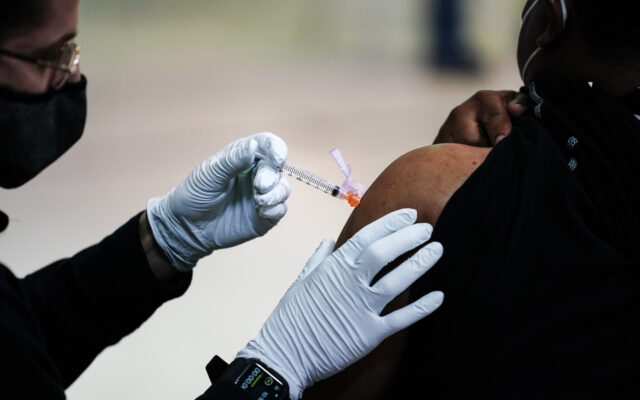
Maine’s COVID vaccine disparities are even greater among young kids
By David Marino Jr., Bangor Daily News Staff
In Cumberland County, about a third of 5- to 11-year-old children have not yet received a single dose of the COVID-19 vaccine, according to the Maine Center for Disease Control and Prevention.
Just two hours to the north, in much more rural Piscataquis County, that figure is a staggering 82 percent.
Maine has seen significant disparities in its county-by-county vaccination rates virtually since vaccines became available to the general public. But those disparities for the general population aren’t nearly as pronounced as they are for the 5- to 11-year-old age group that’s currently the youngest age group eligible to receive the vaccine, and the one that became eligible most recently.
The massive gap in vaccinations among Maine children is emblematic of the same divides behind the vaccination disparities in the adult population. The percentage of a county’s population with a bachelor’s degree or higher was the strongest predictor of a higher vaccination rate in a Bangor Daily News analysis of vaccination data. The percentage of a county’s voters who supported Donald Trump in the 2020 election was nearly as strong a predictor of a low vaccination rate among kids in that county.
Higher median household incomes and population density were also strong predictors of a higher inoculation rate.
The rural-urban disparities with the COVID-19 vaccine are much more pronounced than any previous vaccine disparity, said Erika Ziller, professor and chair of public health at the University of Southern Maine and director of the Maine Rural Health Research Center.
There are similarly lower rural rates for the human papillomavirus, or HPV, vaccine, which protects against a primarily sexually transmitted disease that can result in various forms of cancer, Ziller noted. It became available in 2006, more recently than many other vaccines.
In both cases, some parents do not judge the disease the vaccine is fighting to be a significant risk to their children, Ziller said.
Children are far less likely to get seriously ill from COVID than older people. However, the more contagious nature of the omicron variant has ensured that more children are in the hospital than ever as more contract the disease. And 5- to 11-year-olds are also at risk of spreading the disease to their older family members.
There are also logistical reasons why children might not get the COVID shot: rural areas have fewer health care providers, in particular, fewer with flexible hours. Many parents or guardians might not be able to take time off work to get their children the two-dose vaccine, Ziller said.
But the level of misinformation and partisanship related to the COVID-19 vaccine is far higher than with past vaccines, she noted. For many, hearing an anecdote about COVID-19 vaccine side effects, which are unbelievably rare, can be enough to turn them away from getting their children inoculated, Ziller said.
“The whole pandemic has been politicized in ways that are really detrimental to public health,” Ziller said. “That’s just unfortunate. And we as public health practitioners need to figure out how to do that communication better.”
Such efforts are far from hopeless, Ziller said. There is quite a bit of evidence that rural populations are more likely to trust their own pediatricians than outside sources. The shots are widely viewed as safe and effective by physicians nationwide in rural and urban areas alike.
In Washington County, where about 78 percent of 5- to 11-year-olds are unvaccinated, doctors at Down East Community Hospital in Machias encourage parents to get their children vaccinated for COVID-19 during visits and tell them where the shots are available, hospital spokesperson Julie Hixson said.
Some have already gotten their children vaccinated while others are thankful for the information, Hixson said. Yet, she said, “some are not happy to hear that we encourage it.”
Dover-Foxcroft-based Regional School Unit 68 has held vaccine clinics for students under 12 as well as publicized others in the area, Superintendent Stacy Shorey said.
But asked if she is worried about the county’s low vaccine rate for children, she said universal masking and pooled testing policies were working effectively to keep students in the classroom.
Ziller, whose passion for rural health began when she was growing up in South Paris in rural Oxford County, said that an important part of the effort to get more children vaccinated was to come from a place of understanding and not to make negative assumptions about parents and guardians who haven’t gotten their children the shot.
“They’re parents who love their children and want what is best for them,” Ziller said.